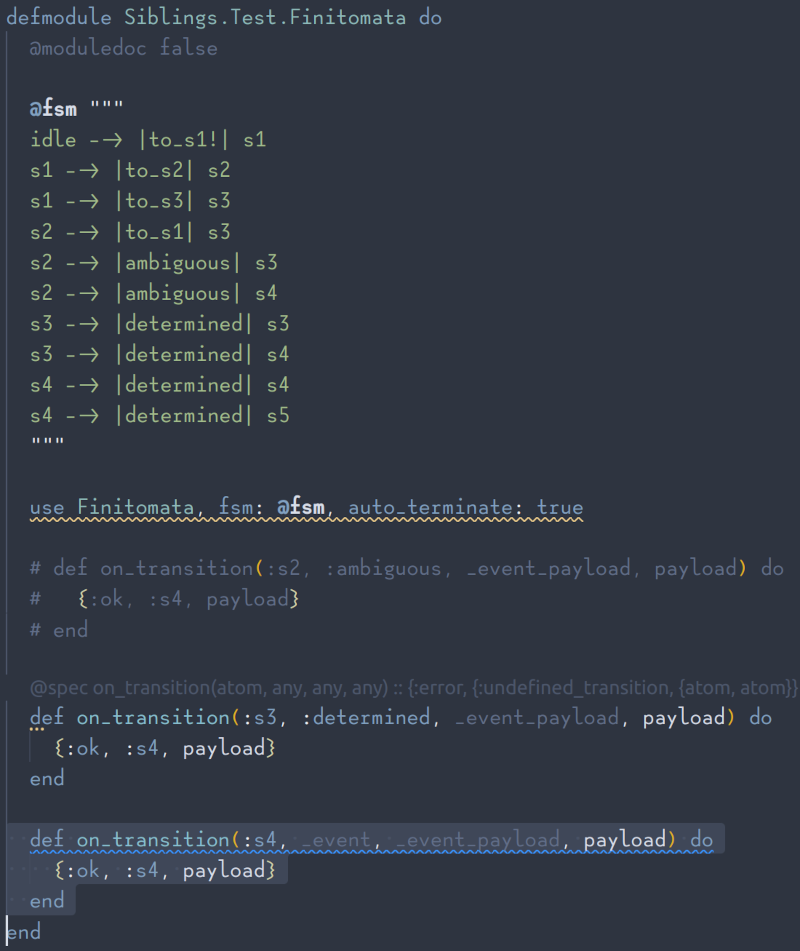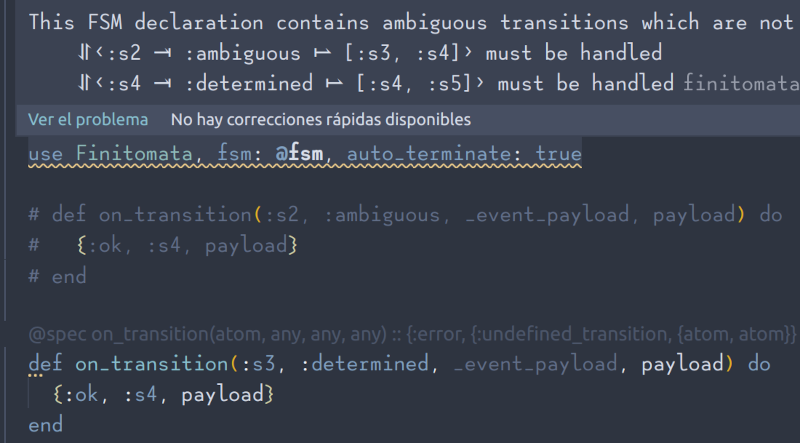Finitomata Compiler
View SourceElixir provides an ability to introduce a custom compiler for any mix project. Finitomata leverages this feature, providing a set of diagnostics for modules declaring the FSM.
Overview
Consider the following FSM.
graph TD
idle --> |to_s1!| s1
s1 --> |to_s2| s2
s1 --> |to_s3| s3
s2 --> |to_s1| s3
s2 --> |ambiguous| s3
s2 --> |ambiguous| s4
s3 --> |determined| s3
s3 --> |determined| s4
s4 --> |determined| s4
s4 --> |determined| s5Here we have transitions which do not require a handler (events to_s1!, to_s1, to_s2, and to_s3 define the target state, so just sending the event to the FSM in the respective state would be enough.) Also we have ambiguous and determined events (don’t ask about the name of the latter,) which wouldn’t succeed without the respective Finitomata.on_transition/4 handler declared. This handler must route the event to one of two possible states, conditionally returning {:ok, :s3, state} or {:ok, :s4, state} based on the state, the payload, or the event payload.
An attempt to call ambiguous event from state s2 without this handler defined would result in runtime error of the shape
{:error, {:ambiguous_transition, {:s2, :ambiguous}, [:s3. :s4]}}but we can do better. Here is the custom compiler shining. Let’s see how the editor would have the code highlighted.

Warnings, Infos, Hints
There are three different types of diagnostics provided by :finitomata compiler.
Warning
Warning is reported both to the language server and to console during project compilation. It says “this module declares some ambiguous transitions not handled in the code.” Here is how it looks in the editor.

Info
Info is reported in cases when the compiler is not able to determine whether the ambiguous transition has been covered or not.

Hint
Hint is emitted when the compiler is positive about the ambiguous transition has been covered, just for the sake of better user experience.

WIP
This compiler is very much WIP, but it’s already fully functional, and, despite it is not able yet to report complicated cases when the transition seems to be handled, but one or more branches are unreachable, it could be a very handy tool for the additional self-check on whether the FSM is covered or the application might suffer the ambiguous, or not reachable, or not allowed runtime errors.